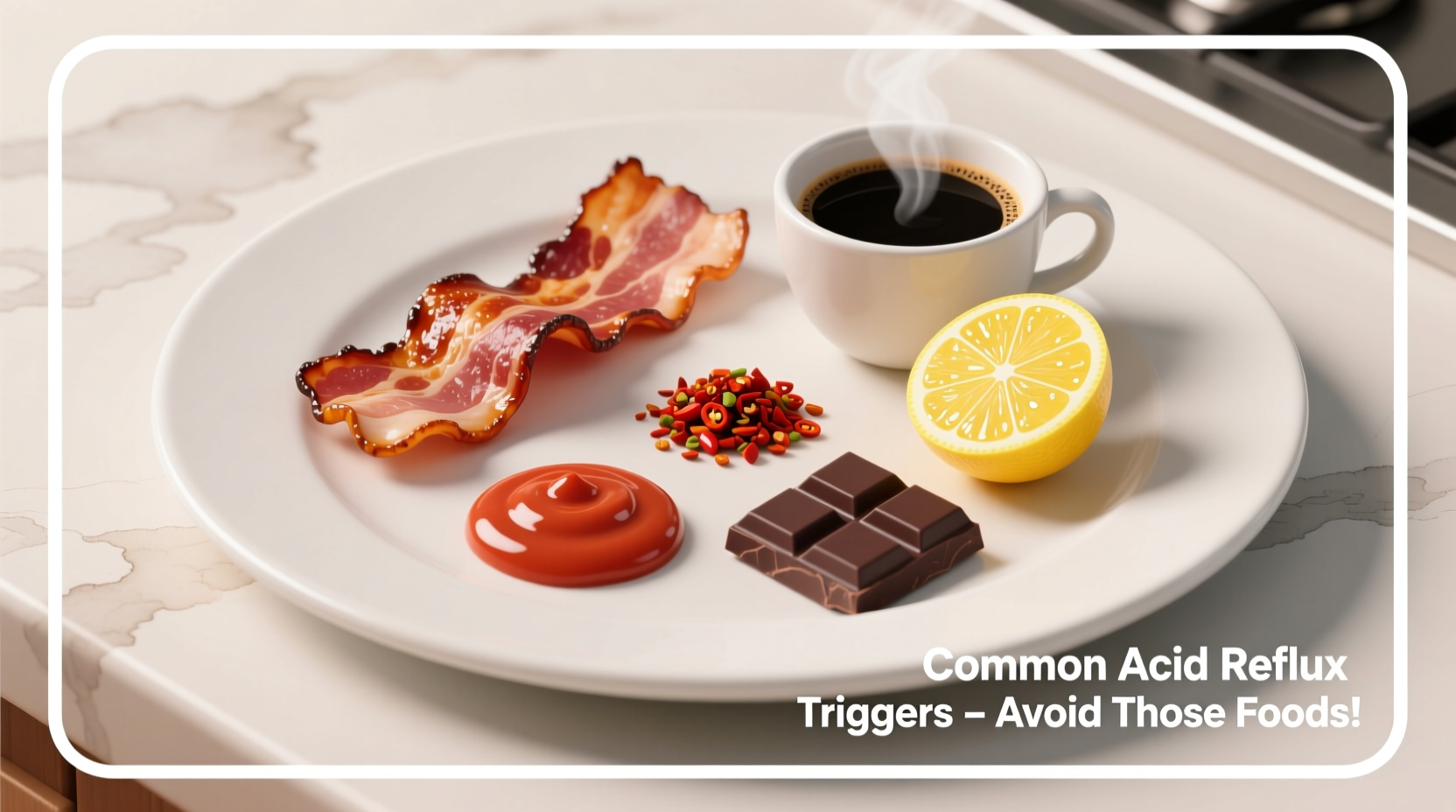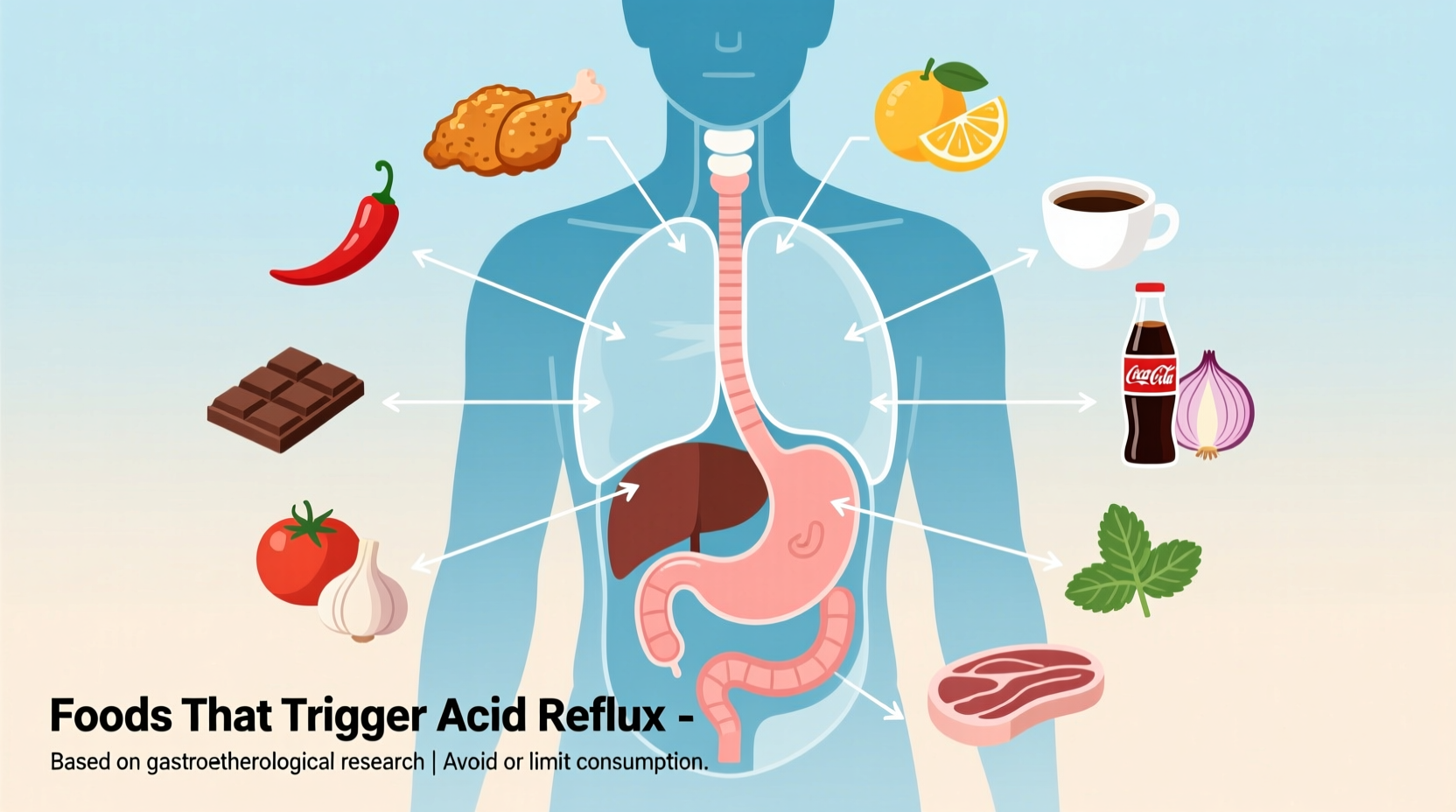Based on clinical evidence from gastroenterology experts, the top foods that trigger acid reflux include high-fat meals, spicy dishes, citrus fruits, tomatoes, chocolate, mint, coffee, alcohol, and carbonated beverages. These items relax the lower esophageal sphincter or increase stomach acid production, causing heartburn and regurgitation in susceptible individuals.
Understanding Acid Reflux and Your Diet
Acid reflux occurs when stomach contents flow back into your esophagus, causing that familiar burning sensation known as heartburn. While occasional reflux affects 60 million Americans monthly according to the National Institute of Diabetes and Digestive and Kidney Diseases, certain foods consistently trigger episodes by weakening the lower esophageal sphincter (LES) or increasing gastric acid production.
"Identifying your personal food triggers is the most effective dietary strategy for managing reflux," explains Dr. Lauren Gerson, a gastroenterology specialist at Stanford University Medical Center. "While certain foods commonly cause problems, individual responses vary significantly."

The Science Behind Food Triggers
Your digestive system responds differently to various foods. High-fat items delay stomach emptying, increasing pressure that forces contents upward. Spicy foods stimulate acid production while relaxing the LES. Acidic foods like citrus and tomatoes directly irritate the esophageal lining already compromised by reflux.
Research published in the American Journal of Gastroenterology confirms that certain foods consistently correlate with reflux symptoms across multiple clinical studies. The physiological mechanisms include:
- LES pressure reduction (fatty foods, chocolate, mint)
- Increased gastric acid secretion (coffee, alcohol, spicy foods)
- Delayed gastric emptying (high-fat meals)
- Direct esophageal irritation (citrus, tomatoes)
Common Acid Reflux Trigger Foods by Category
Fatty and Fried Foods
Fried items, fatty meats, and rich sauces top the trigger list. These foods slow digestion, increasing stomach pressure that forces contents upward. A 2023 review by the American College of Gastroenterology found that high-fat meals reduced LES pressure by 30-50% compared to low-fat alternatives.
Spicy Dishes
Chili peppers, hot sauces, and heavily spiced foods stimulate acid production while irritating the esophageal lining. While cultural tolerance varies, capsaicin (the compound that makes peppers hot) consistently correlates with increased reflux symptoms in clinical studies.
Citrus Fruits and Tomatoes
Oranges, grapefruit, lemons, and tomatoes have high acidity levels that directly irritate the esophagus. The Mayo Clinic identifies tomatoes as one of the most common dietary triggers due to both acidity and compounds that relax the LES.
Chocolate and Mint
Both contain methylxanthines that significantly reduce LES pressure. Dark chocolate's higher cocoa content makes it particularly problematic despite its antioxidant benefits.
Caffeinated and Carbonated Beverages
Coffee (even decaf), tea, and soda increase gastric acid while carbonation creates pressure that forces stomach contents upward. Studies show coffee reduces LES pressure within minutes of consumption.
| Common Trigger Foods | Why They Trigger Reflux | Practical Alternatives |
|---|---|---|
| Fried chicken, french fries | High fat content delays stomach emptying | Baked chicken, oven-roasted potatoes |
| Orange juice, grapefruit | High acidity irritates esophagus | Melons, bananas, oat milk |
| Tomato sauce, ketchup | Acidity + LES relaxing compounds | Bechamel sauce, pesto, hummus |
| Coffee, energy drinks | Stimulates acid production, relaxes LES | Herbal teas, almond milk lattes |
| Peppermint tea, gum | Significantly reduces LES pressure | Ginger tea, fennel infusion |
Individual Variability in Food Triggers
Not everyone reacts to all trigger foods. A comprehensive 2018 study in Diseases of the Esophagus tracked 200 GERD patients and found significant variation in individual responses:
- 85% reacted to coffee
- 78% to fried foods
- 65% to tomatoes
- 42% to chocolate
- 31% to mint
This variation explains why blanket "avoid all trigger foods" advice often fails. Your personal triggers depend on multiple factors including genetics, existing esophageal sensitivity, and overall digestive health.
Identifying Your Personal Triggers
Follow this evidence-based process to identify your specific triggers:
- Elimination phase: Remove all common trigger foods for 2-3 weeks
- Reintroduction phase: Add back one food category every 3-4 days
- Monitoring: Track symptoms using a food diary app or journal
- Confirmation: Repeat testing for suspected triggers
"The reintroduction phase is crucial," notes registered dietitian Maria Rodriguez. "Many people eliminate foods unnecessarily because they never properly test individual items."
Practical Dietary Adjustments for Relief
Instead of complete deprivation, implement these sustainable changes:
- Modify cooking methods: Bake, grill, or steam instead of frying
- Adjust meal timing: Eat 3-4 hours before lying down
- Control portions: Smaller meals reduce stomach pressure
- Strategic substitutions: Try almond milk instead of coffee, basil pesto instead of tomato sauce
Research shows that combining dietary changes with weight management (if applicable) and elevating the head of your bed provides significantly better relief than medication alone for mild-to-moderate GERD.
When to Consult a Healthcare Professional
While dietary changes help many people, consult a doctor if you experience:
- Symptoms more than twice weekly
- Difficulty swallowing
- Unintended weight loss
- Nighttime symptoms disrupting sleep
- No improvement after 4-6 weeks of dietary changes
Persistent reflux could indicate gastroesophageal reflux disease (GERD) requiring medical evaluation. Untreated chronic reflux may lead to complications like esophagitis or Barrett's esophagus.











 浙公网安备
33010002000092号
浙公网安备
33010002000092号 浙B2-20120091-4
浙B2-20120091-4